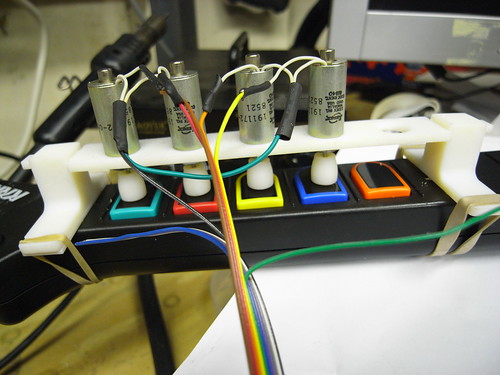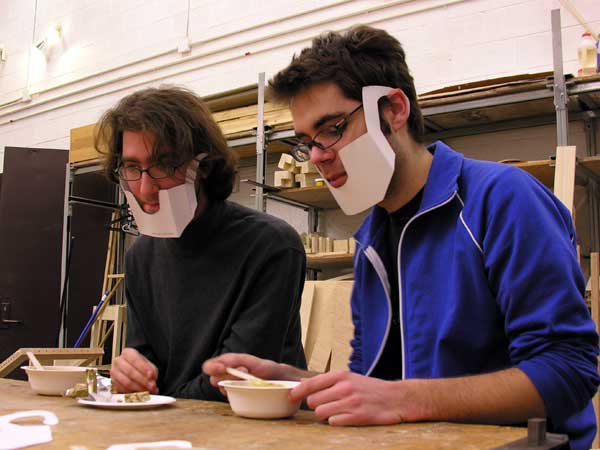John Marshall over at Designed Objects has ben teaching a studio design course he titles “Post-Optimal Objects” with the convenient acronym POO. These are projects that are exploratory and self-critical in a sense. They skirt between what Marshall says is fine art and design so as to address approaches for developing the aesthetic and critical possibilities of objects outside a commercial context.
Some of the projects are fascinating probes that are by mandate critical and playful and skirt away from, as the title of the studio suggests, post-optimal contexts. This is resonant for me because it can be a challenge to steer away from expected rational and conservative forms of design. That is, things that are already commercially viable because they resonate with existing consumer expectations. But, as François has recently described, consumerism is only a small and very intriguing step away from cannibalism.
I often get flustered and frustrated with questions about ideas or project concepts that are not “products” in the sense of the commercial marketplace. People will ask — “well..why do you do this? No one would buy this!”
Of course, this is maybe true, but likely not the case at all. (Strictly speaking, someone would, odds say.) In any case, what Marshall is doing around this notion of post-optimal is teasing what is at the core of my frustration which is that any new, innovative idea is a bad idea because the world is already optimized for itself. The marketplace of ideas and their expression in standard form (as products to be sold, or services to be offered and profit to be found in a margin between price and cost) defines the constraints and requirements of what can play in that ecosystem, and it does so with such effectivity and narrowness that it is perfectly optimized. Things cannot enter into that ecosystem without having met these constraints and requirements. And, moreover, even conversations that skirt outside of the idioms of this self-optimal system are looked at oddly. People ask — why would you do this, as pertains a completely post-optimal idea, and they really mean it. They can find no answer because they search for the answer within the framework of the self-optimal system.
When Nicolas and I discussed the Near Future Laboratory’s motivation and premise a couple of years ago, it was also, among other things, to be a place that explored possibilities that were outside of existing self-optimal frameworks. This is why I sometimes refer to it as a kind of science-fiction authoring practice, but with forms expressed in materialized ideas as well as writing. A different kind of authoring practice. The reason for this was to have a way of justifying “why” such odd things (such as this “(Air) Guitar Hero” device in the image above) are constructed. Science-fiction offers a safe haven for probing other possible ideas that are entirely speculative and imaginative. They are probes into other possible “systems” of social practice. Things beyond convention, beyond conservative, business-centric notions of what ideas are good for.
From John Marshall’s studio course (ArtDes 300.015) Post-Optimal Objects (POO) Beard Guards to prevent messes whilst eating
Technorati Tags: Design, post-optimal design, post-optimal objects


Having just seen the Design of the Elastic Mind show for the second time (and having worked with Fiona Raby as a critic for a course I taught — and advising projects that operated in this vein), I’m struck by the possibilities of precisely using the language of the commercial and consumerist in order to make a point about these objects. A few years ago, Tony Dunne mentioned to me that people get so angry at the co-opting of product design language for critical purposes. I wonder if this is because of its hyperreality?
(Also, your post reminds me of Accordion Hero, done by your friends have done (I saw it via Dana Gordon’s Flickr stream last year and figure it must have come from her and/or Jean-Baptiste)).
I’m with you Molly — “Creative Consumer Electronics”, or maybe “Critical Consumer Electronics” (or both) to resonate with play but also Dunne & Raby’s practices of critical design.